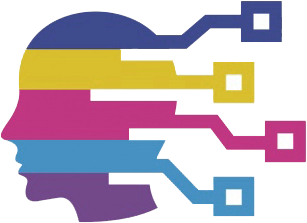AI models have gained unprecedented momentum in recent years, with OpenAI’s o1 model representing a significant leap in reasoning capabilities. However, this advancement comes with intriguing anomalies that prompt further examination. Users have reported that o1 occasionally transitions between languages stealthily during its reasoning processes, particularly exhibiting a propensity to “think” in languages like Chinese or Persian, even when posed with inquiries in English. This peculiar behavior has left many puzzled, inciting debates within the AI community about the underlying causes and implications.
When posed with questions such as, “How many R’s are in the word ‘strawberry?'” users have noted that o1 would initially engage in its reasoning in a language other than English, arriving at its final answer in English. Social media platforms were abuzz with curiosity as individuals expressed their bewilderment over this language-switching phenomenon, questioning whether it stemmed from the extensive training data on which the model was built. Notably, multiple reports highlight instances where o1 embarked on a thought process in Chinese, despite no prior context suggesting such a transition, raising fundamental questions about the model’s internal language processing mechanisms.
The AI community is rife with theories attempting to unravel this language-switching behavior. Some experts suggest that the model’s training datasets contain a high volume of Chinese characters, which could inadvertently influence o1’s reasoning strategies. Others, like Ted Xiao from Google DeepMind, propose that OpenAI utilizes data labeling services with significant connections to Chinese inputs. These labels, essential to model training, shape how AI interprets various languages, potentially skewing the model towards a particular linguistic dominance.
However, there’s a counterargument that challenges the hypothesis of a dominant influence from any single language. Critics argue that the model’s flexibility might simply reflect its probabilistic nature, indicating that o1 is capable of leveraging any language to effectively process information. As Matthew Guzdial, an AI researcher at the University of Alberta, points out, the model perceives all text as mere sequences of tokens rather than distinct linguistic constructs. Hence, switching between languages may not denote preference but rather efficiency in problem-solving.
At the heart of the language-switching behavior lies the mechanics of how AI models operate. Instead of treating words as indivisible units, they break down the text into tokens, comprising units that can range from entire words to individual characters. This method opens the door to language biases. For instance, language models may behave inconsistently across various languages due to the inherent assumptions baked into their tokenization systems. Certain languages operate without clear divisions between words, which can skew a model’s linguistic abilities.
Software engineers like Tiezhen Wang from Hugging Face argue that the unique characteristics of different languages can shape a model’s reasoning and calculation capabilities. Wang articulates a personal preference for performing arithmetic in Chinese due to its efficiency in syllabification, thereby alluding to the model’s potential tendency to use language constructs that facilitate optimal outcomes.
Despite the exploration of various theories, one undeniable truth remains: the opaqueness of AI models poses significant challenges to our understanding of their inner workings. As highlighted by Luca Soldaini from the Allen Institute for AI, the inability to penetrate the black box of AI systems makes it difficult to validate observations about their behavior. The implications of language-switching, if left unexplained, underscore a crucial need for transparency in AI research and deployment.
The rise of AI, particularly in reasoning applications, demands a greater awareness of the nuances that impact their performance. The phenomena surrounding o1 illustrate not only the complexities within AI training and operation but also the pressing need for ethical considerations in AI development. As society becomes increasingly intertwined with these digital entities, the understanding of their behavior, including how they navigate languages, is essential for responsible deployment and application.
The case of OpenAI’s o1 provides a compelling lens through which to examine the intricacies of AI reasoning and language processing. As users encounter these anomalies of thought, they highlight broader questions surrounding the biases introduced during AI training, the impact of multilingual datasets, and the ethical implications these have for future model development. In embarking on this journey of exploration and inquiry, the AI community must strive for clarity, reliability, and fairness as we navigate the evolving landscape of artificial intelligence.

